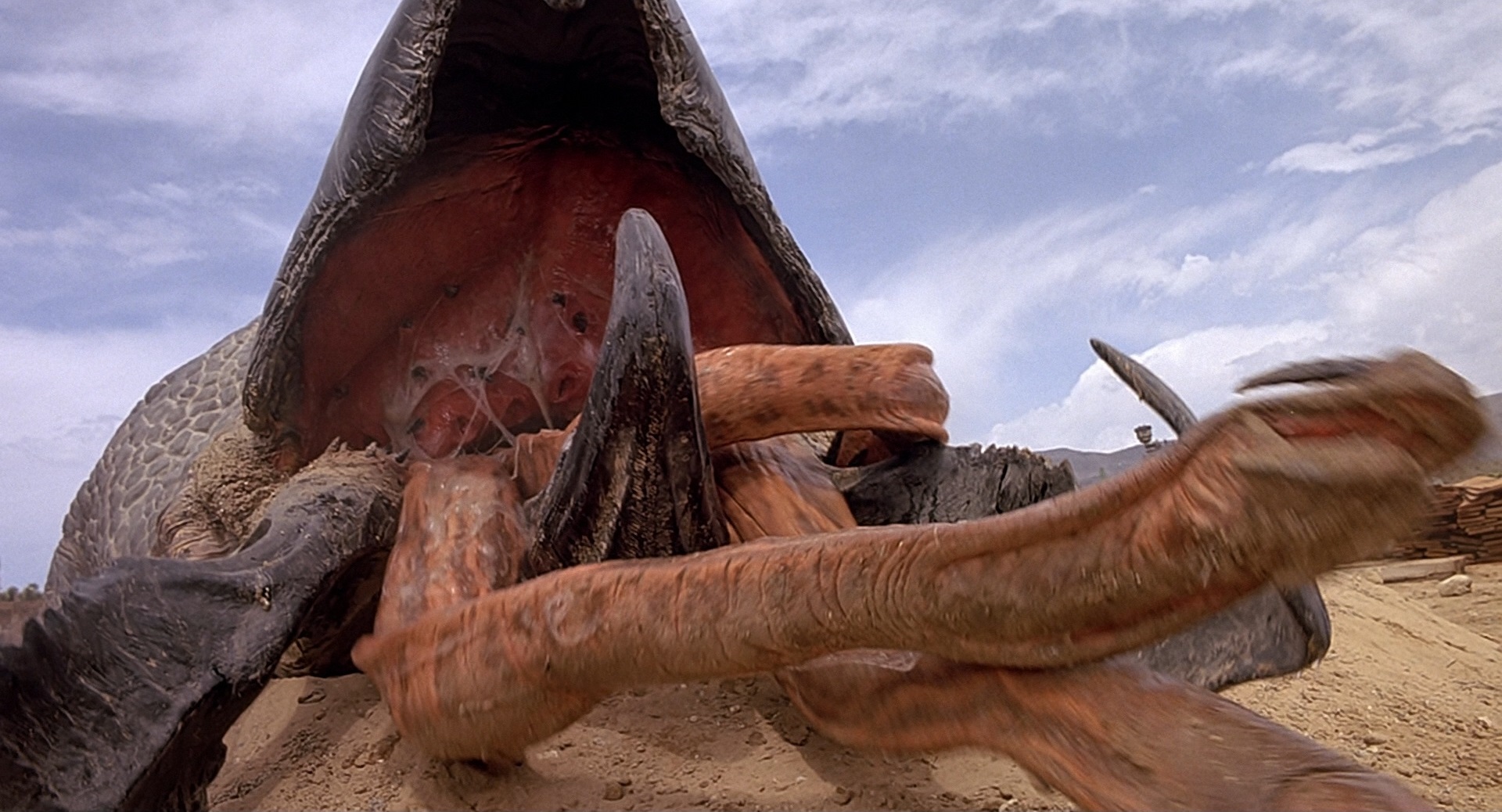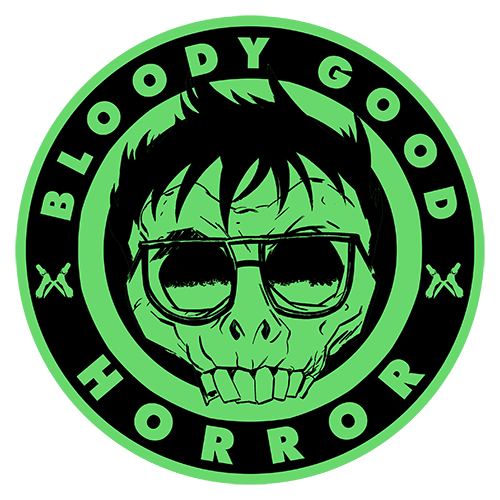
Exclusive Book Excerpt: "Anatomy of Fear" uncovers the inspiration behind "Tremors"
For horror film fans who like to know the stories behind their favorite scary movies, there is a new interview book that might be just what you're looking for.
"The Anatomy of Fear: Conversations with Cult Horror and Science-Fiction Filmmakers" is a collection of conversations with twenty-one horror industry filmmakers who have been responsible for some of the most memorable horror and sci-fi films of the last forty years. From The Blair Witch Project and The Hitcher to The Burrowers and The Last Winter, the book discusses interesting, groundbreaking, obscure, and thoughtful films from every corner of the hororr film universe.
The book was written by Chris Vander Kaay and Kathleen Fernandez-Vander Kaay, whose names you may recognize as they've been writing for Bloody Good Horror for the last year. For more info, visit The Anatomy of Fear or better yet, pick up a copy on Amazon.
For now enjoy the excerpt below, where we learn the inspiration behind the original "Tremors".
After finding success with the Short Circuit films and a productive period working with Steven Spielberg at Amblin entertainment, S.S. Wilson and writing partner Brent Maddock teamed with longtime friend, director Ron Underwood, to make Tremors, a brilliant horror-comedy about a small New Mexico town dealing with giant carnivorous underground worms. Both the writers stayed on the entire Tremors series as writers and directors, even bringing the concept to television for a season on the Sci-Fi Channel.
AOF: This is probably the work of yours that people know best.
S.S. WILSON: I’m sure that’s true.
AOF: Can you tell me where the idea came from?
S.S. WILSON: It came from a single idea. Early on, when I was doing educational films, one of my odd jobs was working out in the Mojave Desert for the Navy. They have a base where they test things like setting fire to battleship decks to see if they can put them out, that sort of thing. They make movies out there, so I became an editor as a summer job. As a result, I would hang out in the desert. I love it, always wanted to be there; it was like a dream come true. You could hike out in the sandy areas when they weren’t bombing them. A lot of big boulders were around, just like the ones in the movie, and I made a note. The note was something like ‘”What if there was something under the ground and I couldn’t get off this rock? Something like a fish or shark, and I was stuck on this rock. But it was in the sand.”
That was about 1975 or something, and it went into my file folder, because we were always making notes of things that might be movies. After the success of Short Circuit and *batteries not included, we went to our agent and said we were frustrated about not being able to work on our movies anymore. A director comes along and takes the movie, goes to make it somewhere, and we’re not involved after that. She said we were talking about producing, because writers don’t have any power in Hollywood. So maybe we needed to hand pick one of our ideas to produce. We brought her three of them. One of them was what we were calling Land Shark at the time, just before it became a running gag on Saturday Night Live. But she liked it, and told us to go with it. So we developed it as a pitch, because we thought it would be easy, being that we were high profile guys. We didn’t realize we were going to do something with this odd comedic tone; that was just our instinct, and we didn’t realize how hard it would be to sell. We pitched it and people said they didn’t get it. And we pitched it everywhere; we could talk to anyone in those days. But no one got it.
So Nancy said we had to write a treatment, and we did write a 25 page treatment. We showed it all over town, no one wanted it. So then she said we had to write it on spec. And all this time, we were working with Ron Underwood, because we wanted him to direct it. We felt bad that he had backed out of ShortCircuit. So we had to nail down who all the characters were going to be in the town, and this is how we arrived at what is now called (and I will take credit for this) the “Tremors tone.” We still get a call for that occasionally, “we need the Tremors tone in this.” We arrived at that because I was a huge fan of 50s and 60s monster movies. I wanted to do something different, and I said these were the characters that were not in the movie: the super bright lady scientist who knows everything and the sheriff who figures everything out and is a can-do guy who solves the problem. I don’t know who is in the movie, but they aren’t. So we started thinking about the person least likely to solve a problem like this, if a giant tarantula attacked your town, or any of those giant monsters. And that’s how we came upon the handymen. What if there are two guys who do everything that needs to be done in this town, and what if the monsters come and they those guys have to figure out what to do? And they don’t know anything, and they don’t even want to be living in this town.
The rest of the characters just came from what we knew about the southwest. We were fascinated by the fact that a lot of Vietnamese were coming to the US, and most of them doing quite well. So the original owner of the story was Vietnamese. When we cast Victor Wong as the owner, Victor told us he wasn’t Vietnamese, and would we object to making him Chinese? So we changed it and named the store Chang’s. That’s how we came up with the idea, and expanded from there to all the other characters that would also be unexpected heroes. After the first two or three drafts were done, we realized these were comedic concepts. Even though the monsters were scary, the survivalists were funny, and Walter Chang was funny. And the handymen were inherently funny. The first two drafts of the script were actually too funny and read a little bit like slapstick. We had set out to make a monster movie, so by the seventh draft, which is the one we shot, we had pulled back on the comedy. Any gags that didn’t come out of the situation got thrown out. Any gags that were made at the expense of the monsters, with the exception of the monsters being stupid, were pulled out. The graboids are actually fairly stupid, people don’t often get that. They’re animalistic and single-minded, they’re blind. Fans have always asked when we’re going to do graboids in the city, and my answer is always, “The graboids wouldn’t hack it in the city. They couldn’t figure out what anything was, they couldn’t home in on anything, they couldn’t break through the street, and they would be dead pretty quickly.”
AOF: It’s interesting, the updating of the 50s monster movie. You could almost draw a direct line to Beast from 50,000 Fathoms. It’s almost an exact inversion of the 50s aesthetic, which is that they tried to take everything so seriously that it all became a joke. Whereas with yours, the humor came from the character stuff, and whenever the monsters were on screen it was serious. They were an actual threat. That’s one of the reasons why it works, because even though the film has a certain vein a comedy, the stakes are high.
S.S. WILSON: I agree, absolutely.
AOF: The idea of the two handymen being the heroes was a brilliant turn. The movie is kind of half Beast from 50,000 Fathoms and half Rosencrantz andGuildenstern Are Dead. These two guys are totally out of their depth and trying to survive. It’s the same dynamic as The Big Lebowski, about a drug-addled lead character in a Raymond Chandler mystery, and how fascinating that juxtaposition is.
S.S. WILSON: Good, I’m glad you liked that. It was a definite intention of ours.

